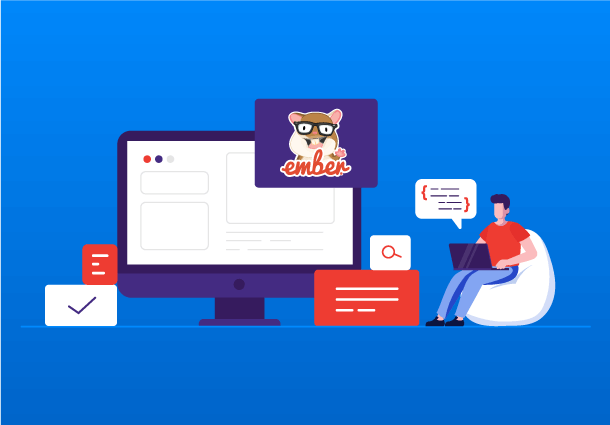The Tech Odyssey: Unraveling Next JS’s Dual Nature in the Ever-Changing Web Trek
In a landscape where web technologies evolve rapidly, the process of making informed decisions has become akin to navigating shifting tides. The imperative to choose wisely amid an array of options has grown more intricate. In this blog, we will learn about what is next js framework.  Today, we embark on a journey to dissect the pros and cons of Next.js – an influential React-powered JavaScript framework that simplifies the creation of exceptional, tailor-made user experiences. In this era of heightened expectations, where milliseconds shape our verdicts on page loading speed and user engagement, the stage is set for companies embracing cutting-edge solutions like React.js and the progressive Jamstack methodology.
Today, we embark on a journey to dissect the pros and cons of Next.js – an influential React-powered JavaScript framework that simplifies the creation of exceptional, tailor-made user experiences. In this era of heightened expectations, where milliseconds shape our verdicts on page loading speed and user engagement, the stage is set for companies embracing cutting-edge solutions like React.js and the progressive Jamstack methodology.
It allows you to build both simple and complex web applications much faster, and easier, and due to many great frameworks that have grown upon it, you can now build blazingly fast websites to achieve a much better UX and SEO efficiency. Understanding the essence of Next.js opens the gateway to unparalleled flexibility, enabling adept navigation and evolution within the dynamic realm of online existence.
As providers of Next.js development services, we deem this flexibility to be the cornerstone of paramount significance in an era of exponential digital expansion. This advantage empowers us to swiftly experiment, gauge, and fine-tune our concepts within the ever-changing landscape. In triumph, swift integration of novel features and adept responses to rapid transformations become our arsenal to retain competitive prowess. Conversely, in the face of challenges, the flexibility offered by Next.js allows for seamless reconstruction of strategies, fostering adaptability that remains unparalleled.
Charting Avowing Frontiers: Delving into Benefits of NextJS Amid Frontend Choices
Technology selection is frequently based on project requirements, thus knowing all of the possibilities is essential. Furthermore, many developers place a high priority on designing technology that enables quick project completion while fulfilling all prerequisites.  The best technology is chosen based on a project’s needs and technical knowledge. We explain the benefits of choosing Next.JS to help programmers. In addition, we stress thoroughly reviewing your project requirements before beginning. A thorough understanding of the project makes choosing the best programming language or framework easier. By improving user experience, Next.JS makes sure web development is reliable and easy. Now let’s explore the advantages it offers.
The best technology is chosen based on a project’s needs and technical knowledge. We explain the benefits of choosing Next.JS to help programmers. In addition, we stress thoroughly reviewing your project requirements before beginning. A thorough understanding of the project makes choosing the best programming language or framework easier. By improving user experience, Next.JS makes sure web development is reliable and easy. Now let’s explore the advantages it offers.
As known, Next.js is an open-source JavaScript framework created by Vercel (previously Zeit). It is based on React and Node.js. This framework is full of cool features which help developers optimize UX, performance and score great numbers in Core Web Vitals at audit time. Some say it is a full-stack JavaScript/React framework, and I agree with them as it allows you to develop REST or GraphQL APIs via a feature called API routes alongside your frontend application. Next.js has gained immense popularity among developers in recent years.
In this article, we will explore the reasons behind this shift and analyze the advantages that Next.js offers over vanilla React. From its server-side rendering capabilities to its robust features for complex web applications, Next.js has become the go-to choice for developers aiming to build fast, SEO-friendly websites. Join us as we delve into the key factors driving the widespread adoption of Next.js and discover why developers of all levels are embracing this powerful framework.
Forging Limitless Horizons: Next.js Unleashes Scalability for Web Applications
Next.js, a powerful framework built on top of React, has emerged as a driving force in the realm of web application development, notably due to its impressive scalability capabilities. With the digital landscape evolving at an unprecedented pace, the need for web applications to seamlessly accommodate increased traffic, complex features, and evolving user expectations has become paramount.  Next.js, through its strategic architectural design and advanced features, rises to the challenge, offering a solid foundation for building scalable and robust web applications.
Next.js, through its strategic architectural design and advanced features, rises to the challenge, offering a solid foundation for building scalable and robust web applications.
At its core, Next.js embraces server-side rendering (SSR) and static site generation (SSG), both of which play integral roles in enhancing scalability. SSR allows dynamic content to be rendered on the server, resulting in reduced load times and improved SEO performance. On the other hand, SSG pre-builds static HTML pages at build time, mitigating the need for server-side processing during each user request. This combination not only ensures swift loading speeds but also optimizes the allocation of server resources, a critical aspect of scalability.
Beyond its rendering capabilities, Next.js facilitates the implementation of code-splitting and lazy loading, enabling the efficient delivery of application code to users. This feature becomes particularly significant as an application grows in complexity. By loading only the necessary components and resources, Next.js minimizes the initial load time, enhances user experience, and conserves server resources, thus contributing to scalability. Furthermore, the framework’s integrated support for caching and incremental static regeneration (ISR) further underscores its scalability prowess.
Caching mechanisms reduce redundant requests by storing frequently accessed data, alleviating server strain and enhancing response times. ISR, a unique feature of Next.js, empowers developers to refresh specific sections of a page without re-rendering the entire page. This dynamic approach ensures up-to-date content while minimizing server load, a decisive factor in accommodating larger user bases.
The Next.js ecosystem also encompasses a range of deployment options, allowing developers to choose the setup that aligns with their scalability requirements. Whether deploying on a cloud platform, a content delivery network (CDN), or a combination of both, Next.js adapts, ensuring optimal performance and minimizing downtime, even during peak traffic periods.
Next.js Chronicles: Transforming Frontend Paradigms with a Palette of Perks
In the realm of frontend development, a transformative powerhouse has emerged – Next.js. This cutting-edge framework, an extension of React, is rewriting the rulebook for digital experiences. It’s not just about coding; it’s about crafting enchanting web applications that redefine modernity. Let’s take a look at the benefits Next.js provides for hustle-free endeavors:
Embracing Next.js: A Gateway to Unbounded Potential
Next.js doesn’t just offer a framework; it’s an invitation to a world where pixels pulsate with life and interactions sing. Seamlessly blending speed, scalability, and efficiency, it empowers developers to orchestrate symphonies of user delight.
Server-Side Rendering (SSR): Elevating Performance and SEO Mastery
Bid adieu to loading lags and SEO woes. Next.js’ SSR is a magician’s touch, conjuring web pages on the server side. This spellbinding performance ensures instant gratification for users and content-rich experiences that captivate both audiences and search engines.
Dynamic Routing: Navigational Elegance Redefined
Navigating digital landscapes should be as effortless as a breeze. Next.js introduces dynamic routing, transforming the complexities of routes into a seamless journey. It’s about users gliding through your application, blissfully unaware of the intricacies that make it possible.
Flexible Data Fetching: Scaling Heights with Elegance
Scale with flair and flexibility. Next.js redefines data fetching, offering a spectrum of methods tailored to your data’s heartbeat. Whether Static Site Generation (SSG), Server-Side Rendering (SSR), or Client-Side Rendering (CSR), Next.js empowers you to scale dynamically without sacrificing speed.
Hybrid Brilliance: Where Static Meets Dynamic
Next.js pioneers the art of hybrid applications, harmoniously merging static and dynamic realms. The result? Pages load instantaneously, while dynamic content dances in rhythm. It’s the synergy of Static Site Generation (SSG) and Server-Side Rendering (SSR) – a masterpiece of performance and engagement.
Vercel: Your Partner on the Journey
Every journey needs a reliable companion. For Next.js, that’s Vercel. This dynamic duo ensures seamless deployment, transforming your creations into captivating digital performances. With automatic code splitting and serverless deployment, Vercel amplifies the brilliance of Next.js.
In Conclusion: Next.js, The Vanguard of Digital Artistry
Imagine a world where user experiences transcend conventions, where engagement becomes an art form. Next.js paints this canvas, inviting developers to script stories of immersive delight. It’s not just a framework; it’s a movement that challenges norms and empowers you to create digital narratives that redefine engagement.
Embrace Next.js, and you’re not just adopting a tool; you’re stepping into a new era of frontend prowess. With Next.js as your guide, you’re crafting digital symphonies that captivate, inspire, and revolutionize the way users experience the web. In the symphony of front-end development, Next.js emerges as the composer, inviting you to create harmonies of innovation and engagement.
Overall, Next.js is a great framework, but it won’t replace classic React SPAs. In the realm of web development, harnessing the potential of Next.js takes finesse and expertise. Our company excels in delivering top-tier Next.js development services, ensuring that your digital solutions emerge as robust, performant, and user-centric. With a dedicated team of skilled developers, we specialize in crafting seamless and engaging web applications that leverage the strengths of Next.js.
Whether you’re aiming for enhanced SEO performance, improved user experience, or versatile application deployment, Pattem Digital’s adeptness with Next.js guarantees optimal results. From concept to execution, our commitment to excellence and innovative problem-solving enables us to create bespoke solutions tailored to your specific needs, elevating your digital presence to new heights.


